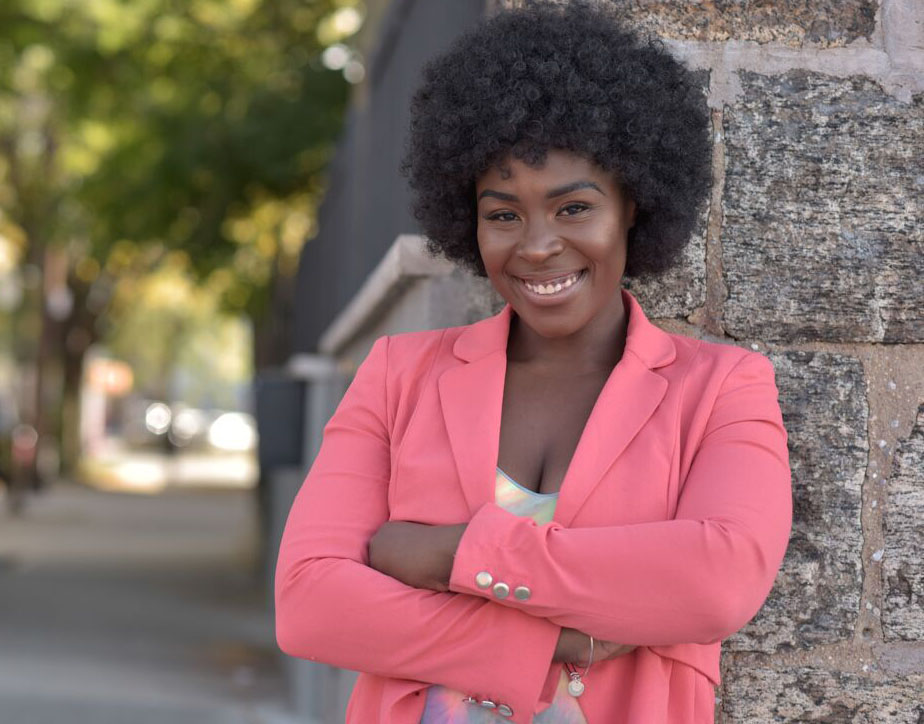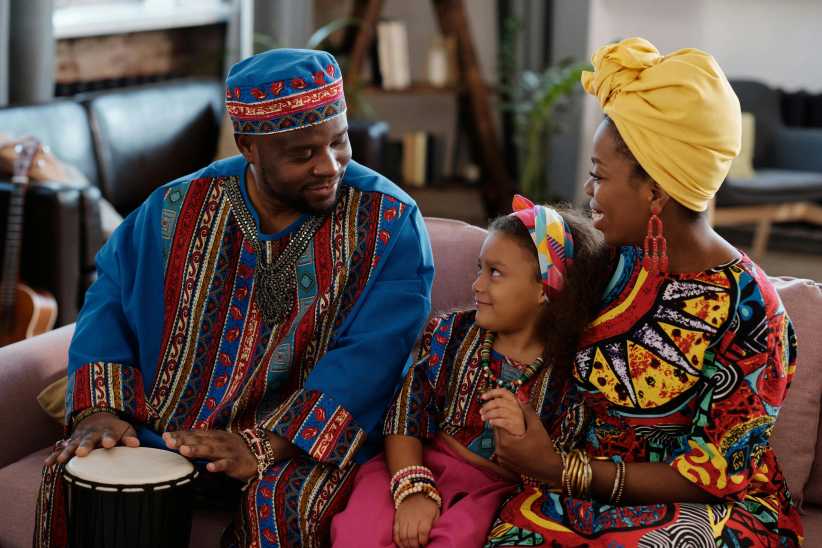Tamykah Anthony, a scientist, STEAM educator and entrepreneur who resides in Astoria, was homeschooling her two children before the coronavirus pandemic forced the city to close all public schools and switch to remote learning.
Anthony, who is also the treasurer for Friends of the Library at Long Island City Library, has her own business, Xanthines All Natural Products, a natural line of home, bath, body and hair products. Anthony also founded Camp Wakanda, a weeklong STEAM camp where she encourages kids to create their own superpower that was inspired by the “Black Panther” movie.
Below, Anthony gives us a breakdown of what a day in her life is like as a homeschool mother with several business endeavors — and how she manages to do it all with grace and patience.
Morning rituals (7 – 8 a.m.)
I start my day with a morning meditation, making breakfast, responding to emails and getting the fruits and vegetables together for juicing (this is part of our nutrition and life skills aspect of homeschooling).
In the meantime, my kids — Sameer, who is 7 years old, and Usha, who is 3 years old — are waking up, making their beds and independently brushing their teeth.
Breakfast, juicing and affirmation circle (8 – 9 a.m.)
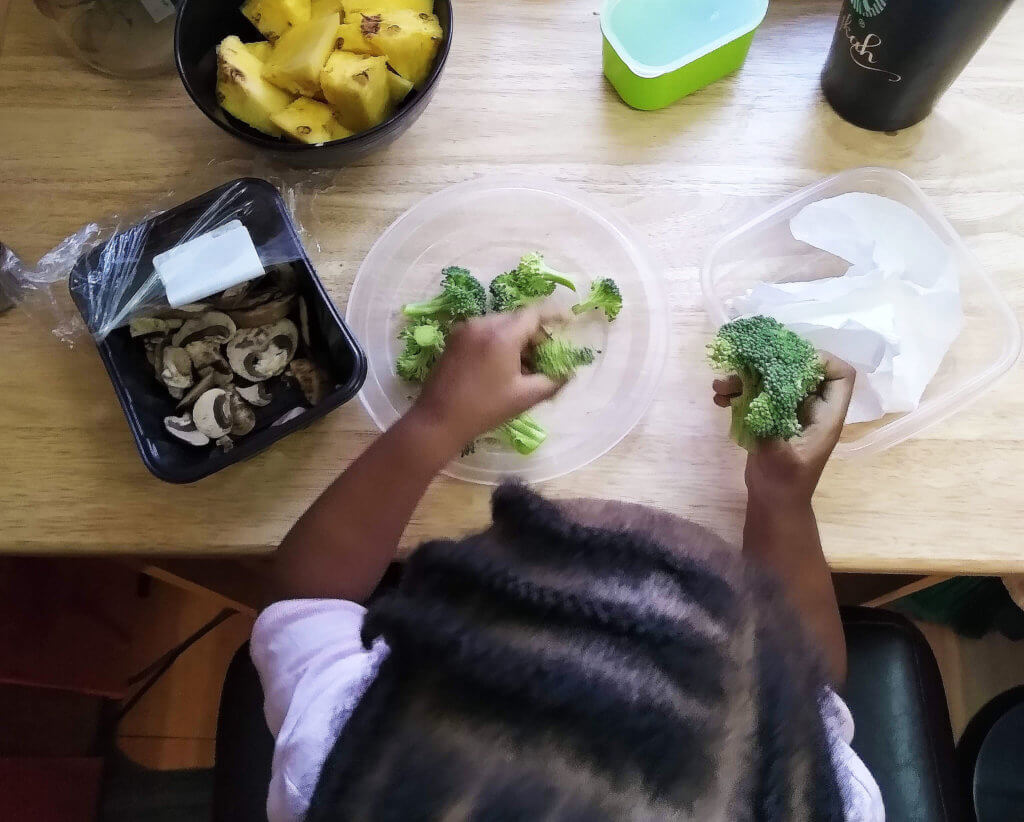
We juice the selected fruits and vegetables. Each person has a job or is responsible for putting a certain fruit or vegetable into the juicer. As we are juicing, we talk about the benefits of each thing that goes into the juice. The kids drink the juice with their breakfast and while they’re eating breakfast, I bring them their elderberry gummies (we make those too).
After breakfast, they check on and feed their pet beta fish and then we do our affirmation circle to set the tone for the day. In the circle, each person has to affirm something about themselves and then something about someone else in the circle until everyone has a turn, and then I tell them what the plan is for the day.
We then read our first book of the day. Sameer leads the reading, he reads and asks us questions about the reading — he mainly asks his 3-year-old sister. This is a great way to engage children of different age groups. We then have a quick discussion about the book. We also review their weekly spelling words, they each have their own set of words depending on their age.
Then, we update their reward chart with what they have done so far for the day, giving stars for making their beds, brushing their teeth, feeding their fish and reading a book.
Time 4 Learning (9 – 10 a.m.)
I use Time 4 Learning in addition to the curriculum I’ve created. So during this time, I do work with Usha while Sameer does work by himself on Time 4 Learning.
Each day, Sameer knows what subjects he needs to work on, so I allow him to pace himself as long as he completes his work for the day. With Usha, I do phonics and math using various pre-prepared worksheets (I laminate them so she can do them over and over, and so I can save paper).
Switching it up (10 – 11 a.m.)
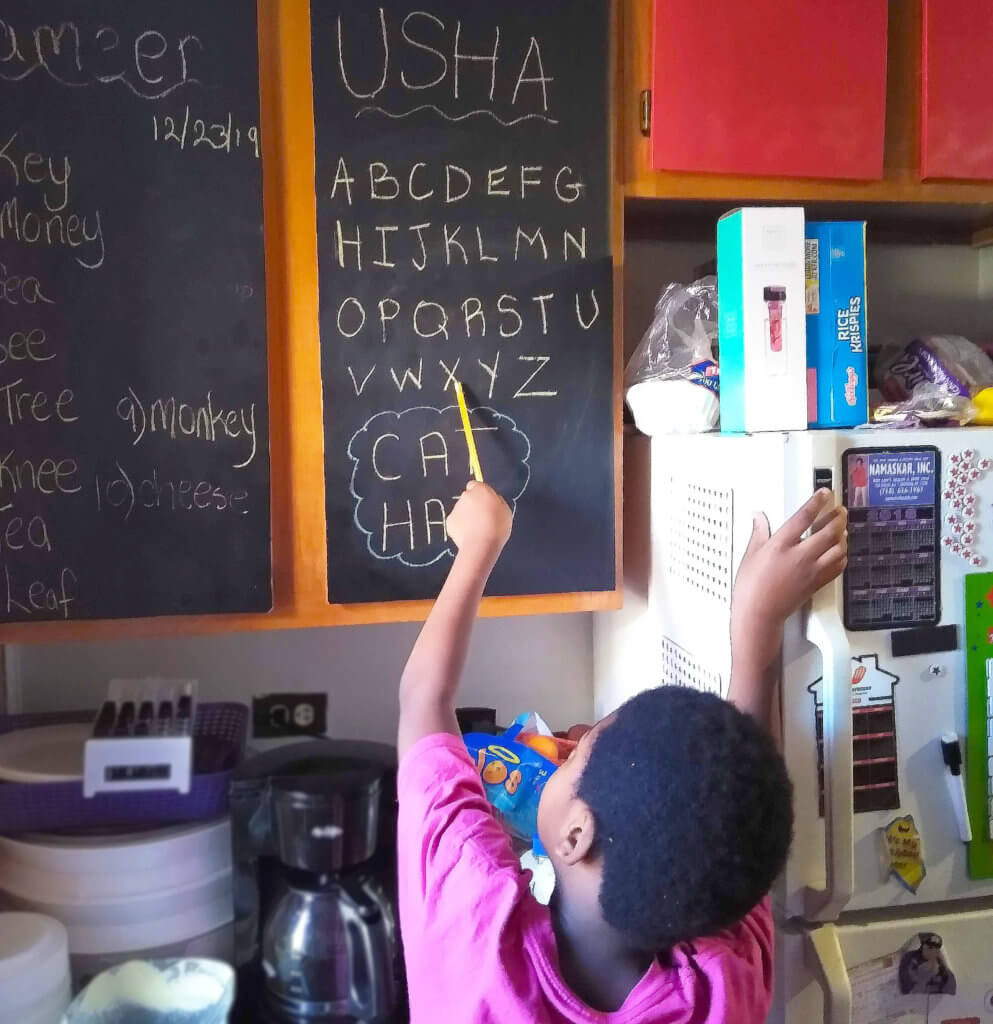
This is when I usually switch.
Usha goes off and does independent work with worksheets, coding, ABCmouse.com, and other platforms. Then, I work with Sameer, checking his work that he completed in the previous hour and the work from the previous day, and I sit with him while he does his quizzes for the day. We go over any incorrect answers and re-teach concepts that he may be struggling with.
Because my children are in two different age groups, they need time separately to do age-appropriate work. Sameer works very well independently but Usha doesn’t, so I make sure I give time to Usha first. Otherwise, she would disrupt my lesson time with her brother seeking attention.
The schedule is also designed to not have them doing the same activity for too long, incorporating activities together and also separately.
Snack time (11 – 11:30 a.m.)
At this time, they eat snacks together and we talk about our day so far, but this is mostly them sitting and talking to each other while they eat their snacks.
Snacks are usually apple sauce or coconut yogurt plus fruit, granola bars, veggie chips. My kids are vegan.
Lunch and free time (11:30 a.m. – 12:30 p.m.)
I use this time to prepare lunch while they have some free time (or what some consider recess in the traditional education system). Free time consists of playing with toys, pretend play, and playing with robots. They may go outside with their dad to the park to ride their scooters or run around by the water — but they aren’t going to the playground during the current quarantine.
Wrapping up academics (12:30 – 1 p.m.)
We eat lunch together, and this leads us to the end of our academic homeschool day.
As a homeschool mom, I only have state requirements for Sameer, because he is school-aged. Usha has no requirements. For my son, I had to initially submit a Letter of Intent to the Department of Education’s Office of Home Schooling. This has to be done by the July before the school year starts or within two weeks of you pulling your child out of school, if the school year already started.
I then submit a quarterly report, such as a progress report, and with the fourth quarter report, an annual assessment has to be submitted. The requirements for reports and assessments are different based on grade.
Quiet time (1 – 3 p.m.)
We then have quiet time in our house. They can have their Kindles, watch a movie, play with toys, or read books — as long as the volume is low. Usha may take a nap during this time.
For me, this is time I work on my business by making products, updating my social media, checking inventory, preparing orders for shipment, breathing and relaxing.
They also usually have a snack during this time.
Hands-on activities (3 – 4 p.m.)
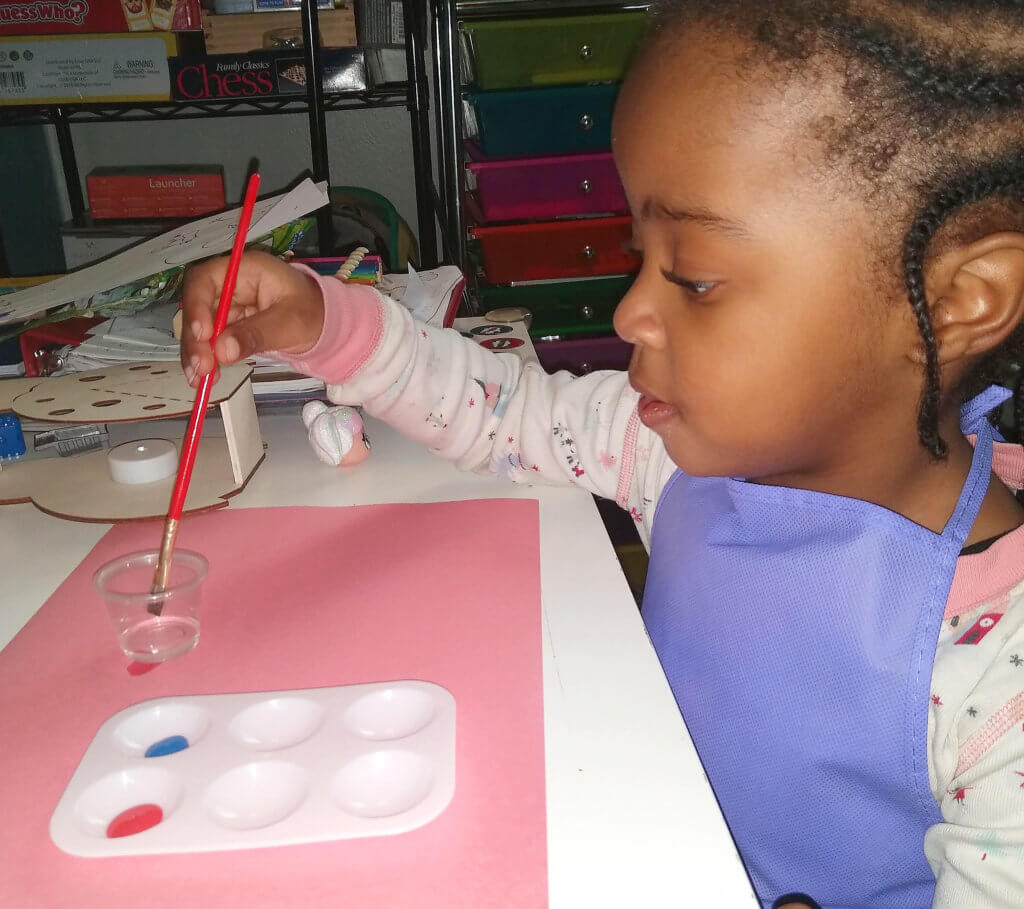
We usually do an activity together, such as board games, playing the Wii, watch Mystery Science videos together, doing a science experiment or some kind of family hands-on activity. Making slime is always the top request!
Prior to the coronavirus pandemic, the kids had more outdoor time. I think right now, with social distancing and without play dates and playgrounds, the challenge is finding things to occupy the kids with at home. Before the pandemic, they had their own individual activities like play dates and martial arts, where they socialized with other children.
Time for dinner (4 – 6 p.m.)
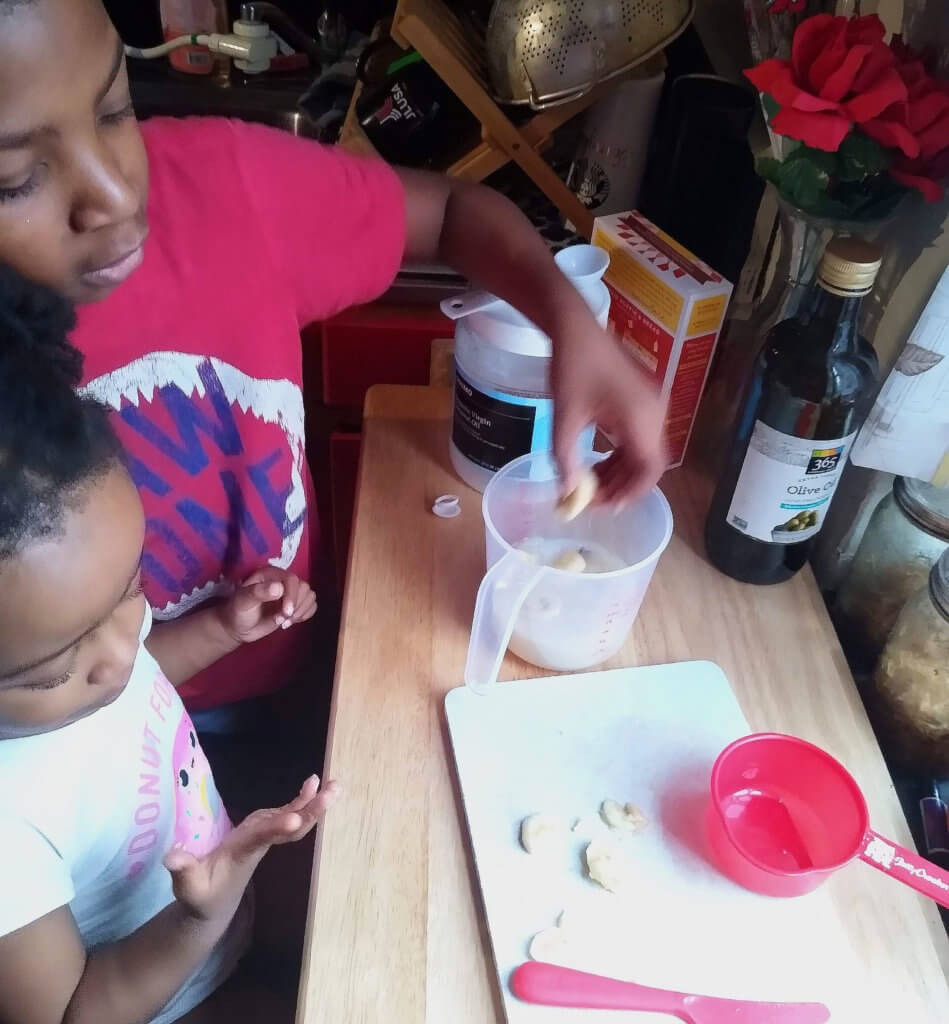
At this time, I’m usually preparing dinner while they are usually playing independently or helping me with dinner. We then eat dinner together.
Baths, showers and reading (6 – 7 p.m.)
Around this time, I prepare a bath for Usha and a shower for Sameer.
Then, independent reading for 30 minutes for Sameer after his shower. I read to Usha after her bath.
Before the libraries closed due to the virus, we’d usually take a trip to the library every week.
Prior to the library trip, I ask them what they each want to learn about and during the library trip, we pick books based on those topics. For example, one week Usha wanted to learn about “poop,” so I got her several age-appropriate books about the digestive system and read them to her and did an activity. Sameer wanted to learn about the solar system so we got books about planets.
I generally have them pick the topics and then I pick the books that are appropriate for that topic. This way, they are engaged because it was their choice. My son is more of a science and engineering fanatic and my daughter is more of a girl power, unicorns, mermaids, fantasy fanatic. When we read together, the children’s books I usually pick out are by Black and Brown authors like “I am Queen Ruby” by Voncille Chaney.
I like to choose books that leave them feeling empowered.
The kids watch movies or shows, mom cleans (7 – 8 p.m.)

They get their Kindles again to watch a show or movie, while I clean up for the day, including cleaning the kitchen and bathroom. I then prepare learning materials for the following day.
Bedtime and binaural beats (8 – 9 p.m.)
It’s bedtime for them. They love binaural beats to go to sleep. Binaural beats is a form of sound wave therapy. Binaural means are like auditory illusions and they are magical. They work best with headphones and can be easily found on Youtube, Spotify, Apple Music, or any other music platform.
So, with this music, you hear two tones, one in each ear, and the two tones differ in frequency resulting in your brain processing an additional beat (the difference between the two frequencies). For example, if the frequency heard in one ear is 120 Hertz and the frequency in the other ear is 130 Hertz, your brain will process a third beat with a frequency of 10 Hertz (the difference between the two). There are various brainwaves and depending on what mental and emotional state you want to induce, you select the binaural beat for that.
I use binaural beats in the theta range at the end of the day. Theta beats induce deep relaxation and calm.
After they’re tucked in, it’s adult time for me. I use this time to catch up with friends, take a shower, meditate and burn sage. I also listen to music and decompress from the homeschooling day.
Entrepreneurial grind time (9 p.m. – midnight)
This is my entrepreneurial grind time. I take this time to work on my businesses by planning, creating flyers, labels, working on the website and any other logistical work I have to get done.
Are there any mental health or self-care tips you’d like to give parents as they adjust to remote learning with their own kids?
The first tip would be to be patient with yourself, especially if this is the first time you are doing it. This is not a vacation for you, either. You are not only dealing with your kids’ remote learning from home and helping them, you are also overwhelmed with the weight of the uncertainty of our current global epidemic. You still have to provide food, pay rent and bills, keep your kids safe and so much more.
Whether you are homeschooling or your child is remote learning, use this time of social distancing to get closer to your families. Do activities together, Pinterest has tons of ideas. Find out what your child likes and learn with them. Use a free app to learn a new language with your child (Duolingo is a wonderful and free app just for this). Set a schedule for completing work and stick to it. Included in that schedule should be times for you and your kids to decompress.
Give yourself a break!

